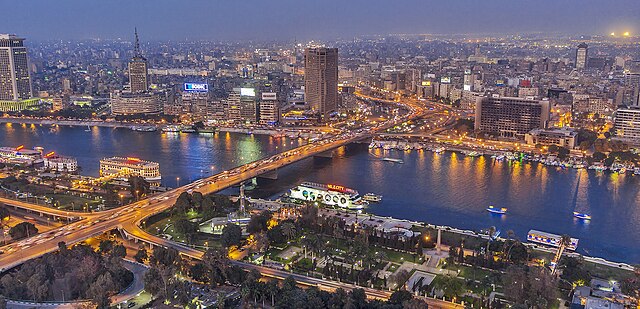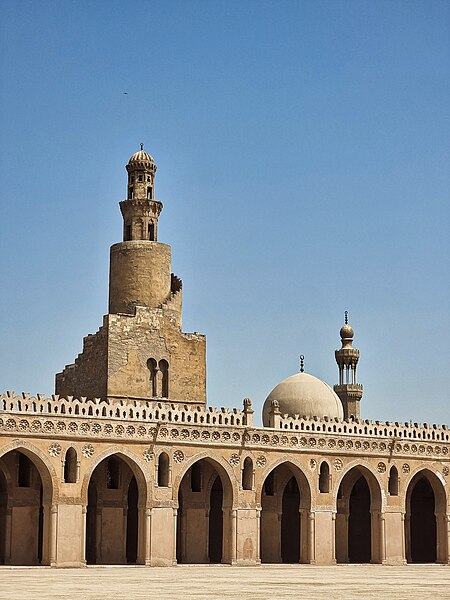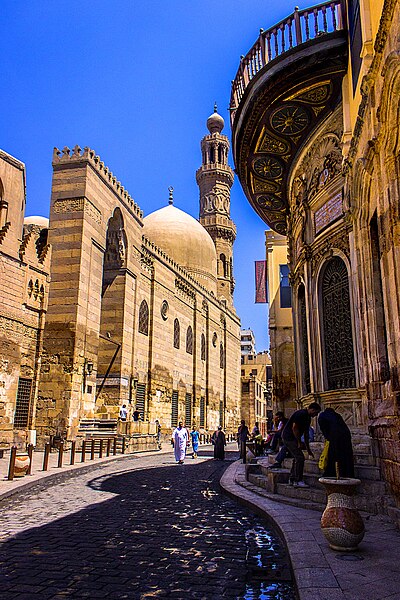The Khalij, also known as the Khalij al-Misri or Khalij al-Masri, was a canal in Cairo, Egypt. It began in the 7th century when the new Arab conquerors rebuilt an ancient canal that linked the Nile with the Red Sea in Pharaonic and Roman times. The connection to the Red Sea was closed in the 8th century, but the canal remained an important feature of Cairo's geography and its water supply. It was traditionally closed for part of the year and then reopened during the Nile floods. The yearly opening of the canal was celebrated as a major festival.
The Khalij in the 19th century
Depiction of the yearly opening of the canal in Cairo at Fumm al-Khalij, from the Description de l'Égypte (c. 1809). Also visible, on the right, is the water intake tower of a Mamluk aqueduct.
Depiction of a bridge over the Khalij in the Description de l'Égypte (c. 1809)
Illustration of houses along the Khalij in the early 19th century (drawing by Pascal Coste)
Cairo is the capital of Egypt and the city-state Cairo Governorate, and is the country's largest city, home to 10 million people. It is also part of the largest urban agglomeration in Africa, the Arab world and the Middle East, the Greater Cairo metropolitan area, which is the 12th-largest in the world by population with a population of over 22.1 million.
Image: Cairo From Tower (cropped)
Image: Mosque of Ibn Tulun and spiral minaret of Mamluk Sultan Lajin, 1296, Cairo
Image: DSC 0003~2~2
Image: Complex of Al Sultan Al Zahir Barquq 009








